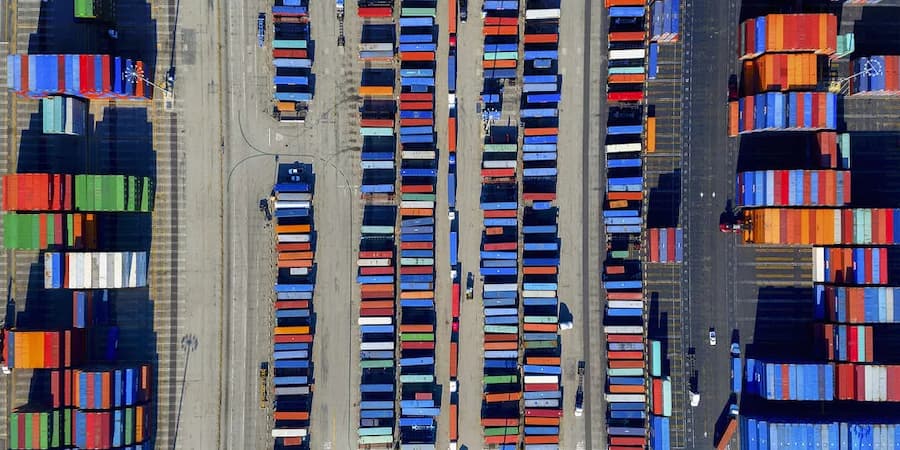IT’S THE MOST WONDERFUL TIME OF THE YEAR!
Or maybe not. Most stressful? That’s more likely, especially if you’re trying to ship products. Between record order levels and a crazy tight carrier market, it’s looking an awful lot like peak season. We may only be in July, but if you feel like you’re preparing for the Christmas season right now, you’re not alone.
SO, WHAT EXACTLY IS PEAK SEASON, ANYWAY?
Basically, it’s a period of time (usually from late summer through fall) when retailers make a big push to restock their inventory. There’s a slew of holidays coming around the bend (Halloween, Thanksgiving, Black Friday, Christmas…) that sellers need to prepare for. That means all the apparel, silverware, decorations, or anything that might be given as a gift needs to get from the factory floor to a warehouse on a deadline.
The process necessitates an uptick in demand for global shipping services. Large quantities of inventory are moving as retailers scramble to ship their wares. Equipment gets snatched up, rates rise, and carriers get booked up like a 737 at Thanksgiving. Even manufacturers who don’t produce a seasonal product can get caught in a tide of retail. As Gail Rutkowski of the National Shippers Strategic Transportation Council, or NASSTRAC, explains,
Peak season mostly affects retailers, but it’s a nightmare for manufacturers who don’t experience seasonality. You can’t beg, borrow, or steal equipment during those months.
Shippers deal with a series of landmines in a typical year. To start off, the need for shipping containers is high during peak season, so moving a product or component stateside becomes a hassle. Greater demand means more crowding at ports and subsequent trouble extracting goods from them (think D.C. Beltway traffic, except with shipping containers). Competition for trucks or trains to move cargo inland abounds. If that weren’t enough of a headache, these forces work in concert to drive rates up. Oh, and watch out for fines.
But that’s not what’s happening in 2021. Nope – instead of gearing up for the busiest time of year, we’ve instead been living with it for months! As the pandemic dies down, and the economy ramps back up, it’s brought about peak conditions on steroids.
LET’S LOOK AT A FEW EXAMPLES.
Ocean rates are rising, for one thing. You may remember port congestion getting so bad last year that it became a regular news item. Most of the stories were out of Los Angeles and Long Beach, which have seen a deluge of imports for nearly a year, but traffic eventually spread to the rest of the country (and the world) as well.
Then there are trucking conditions. Any time there’s a pickup in economic activity, that’s going to be a boon to that industry. But while there’s plenty of business to go around in 2021, drivers are in short supply. Covid, new drug testing requirements and the stress of the job are working in tandem to keep would-be truckers off the road. In a normal year, this would be hard to manage. In a year when e-commerce has risen by nearly 50%, you need all the help you can get.
Under these circumstances, carriers are ripe for rate increases. And indeed, that’s what has happened. Check out this aggregate of ocean rates to see the magnitude of it – worldwide, it might have cost $1,400 to move a container over the ocean two years ago. Now you’re looking in excess of six grand. “I’ve never seen anything like what I’m seeing now,” Rutkowski observes. “It’s across all modes – parcel, LTL, truckload, ocean, intermodal. Across the board, I have never seen the market as volatile and tight. Most indexes are up off the charts like you’ve never seen before.”
And now the traditional peak season is around the corner. The prospect of dealing with even tighter market conditions might give you heartburn, but before you reach for the antacids, we have some good news for you. Peak season might not ramp up the way it has in years past. “What I’m wondering is if the peak isn’t going to just look like the situation that we’re in now”, says Rutkowski. “What’s occurring in the market now might just continue this way. I think what we’re going to see is an extension of it and possibly a bump.”
On one hand, shippers are already living in peak season and have been for a while. On the other, they might not have to navigate an even tighter market as we round out 2021.
Of course, everyone would probably prefer that the logistics market just simmer down already! We wish we could wave a magic wand and make it so. Short of that, we can take the logistics burden off of shippers’ hands. If carrier relationships and inventory management is making you pull your hair out, we can help. We would love to be your partner, and help you navigate these turbulent times.









